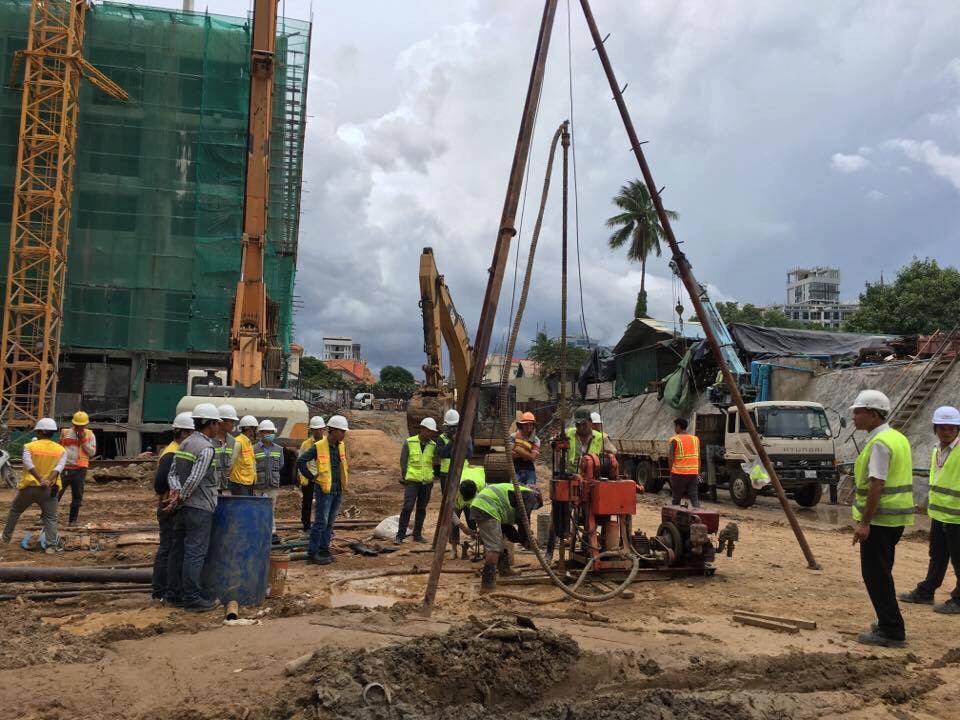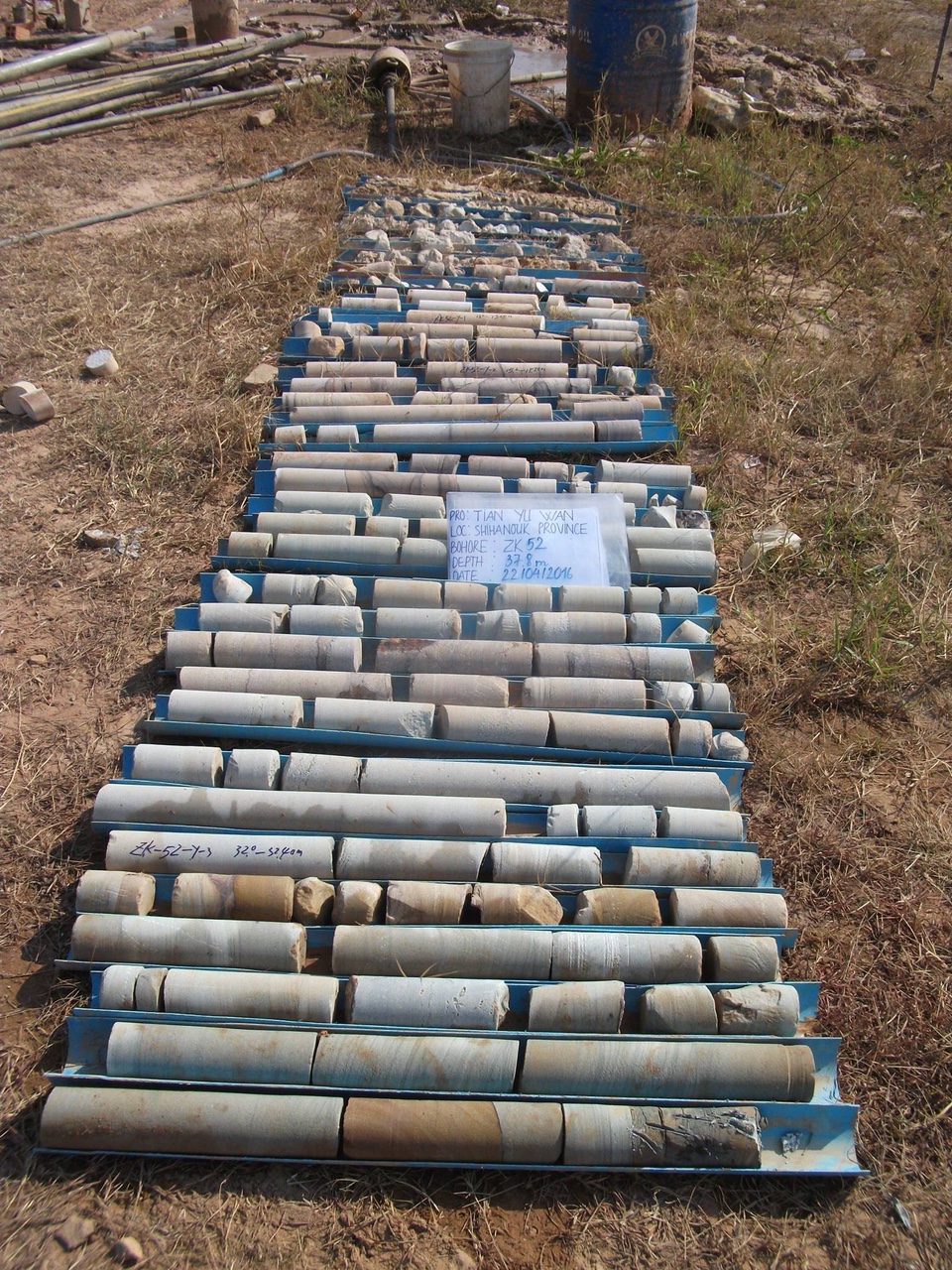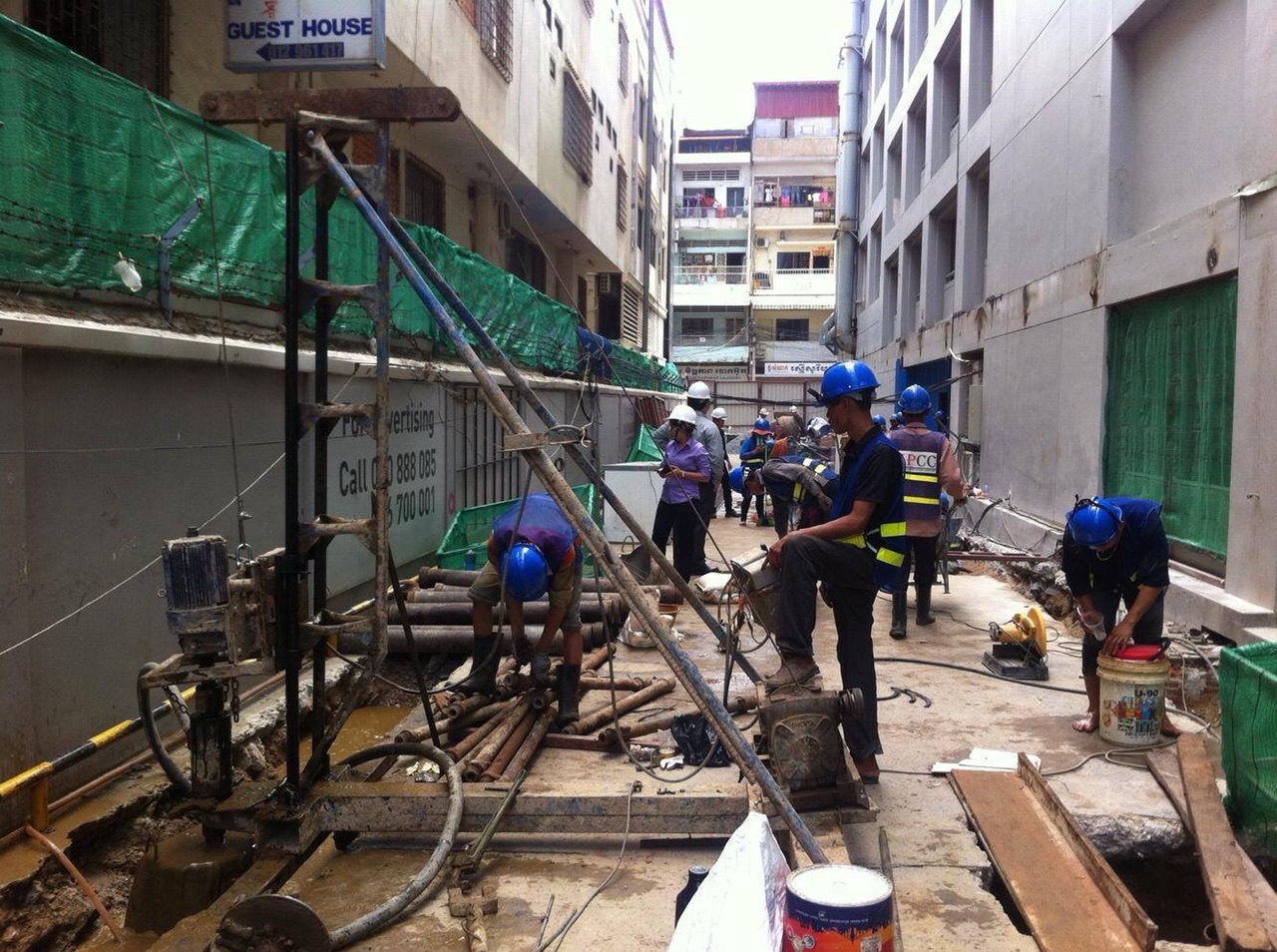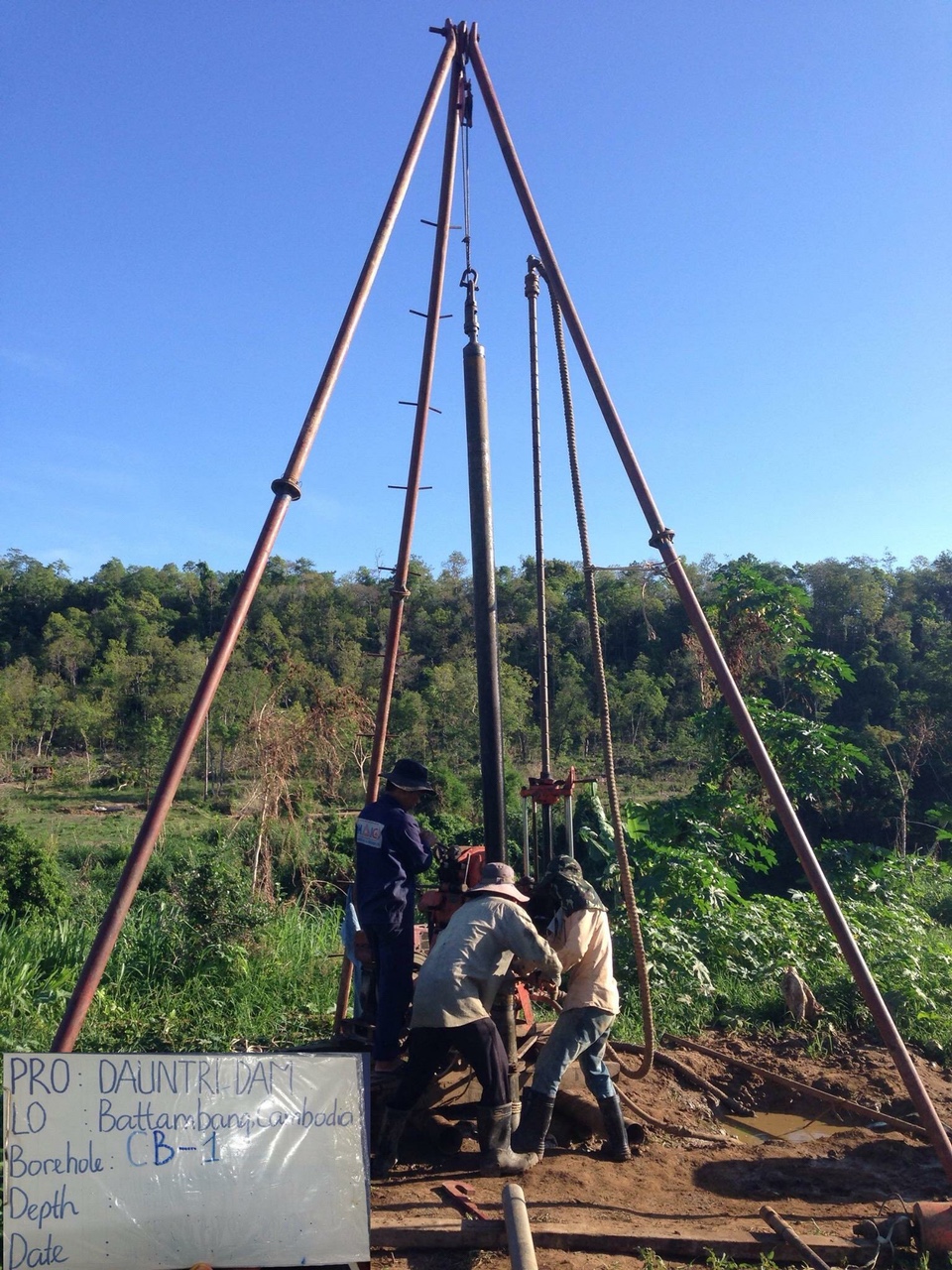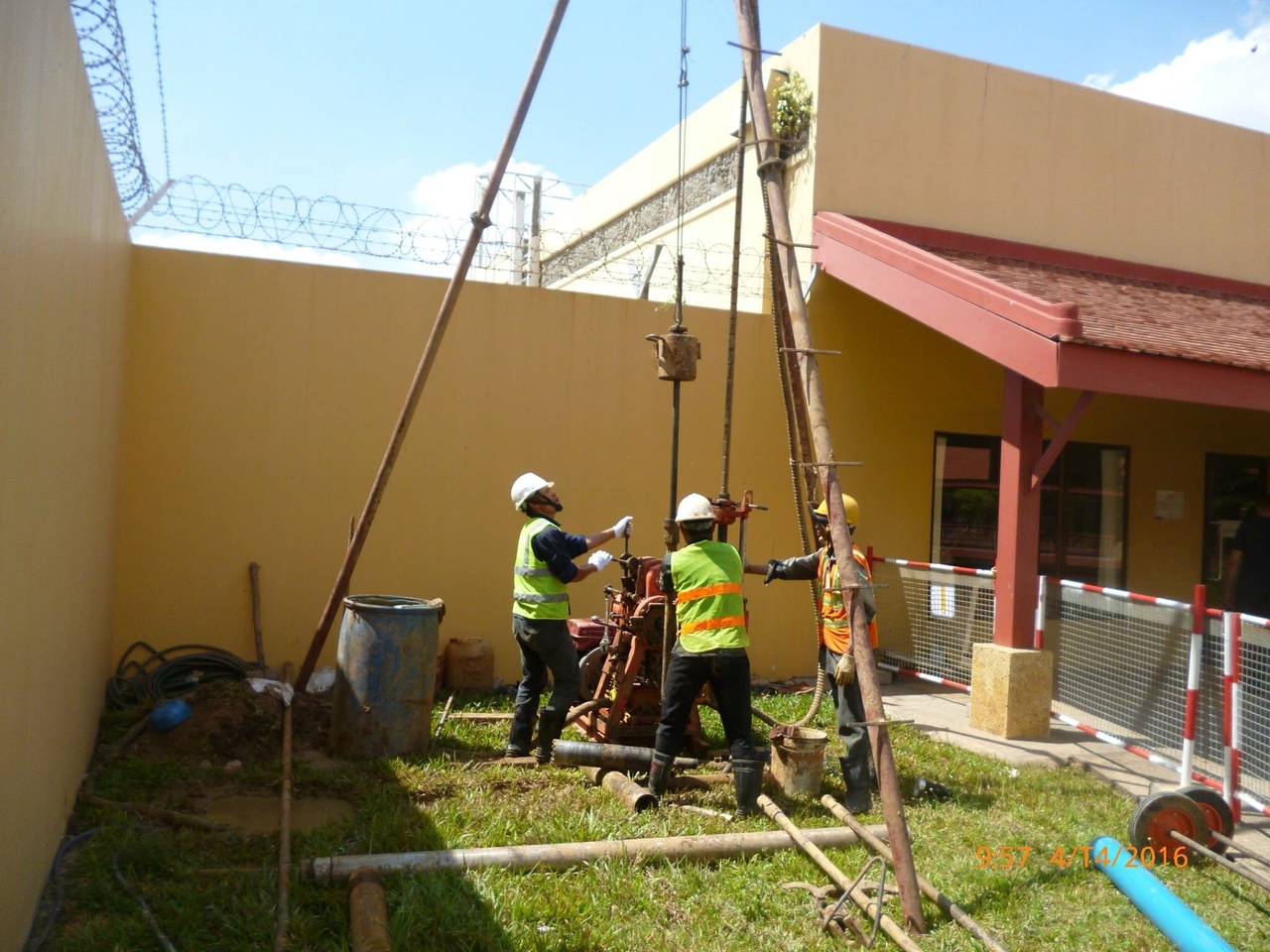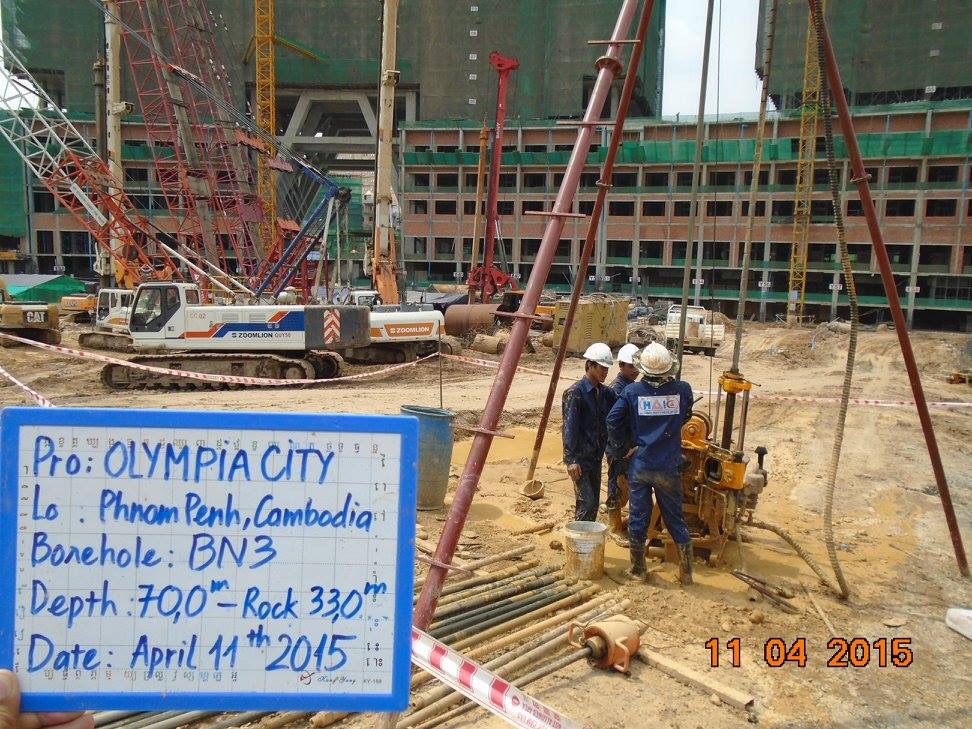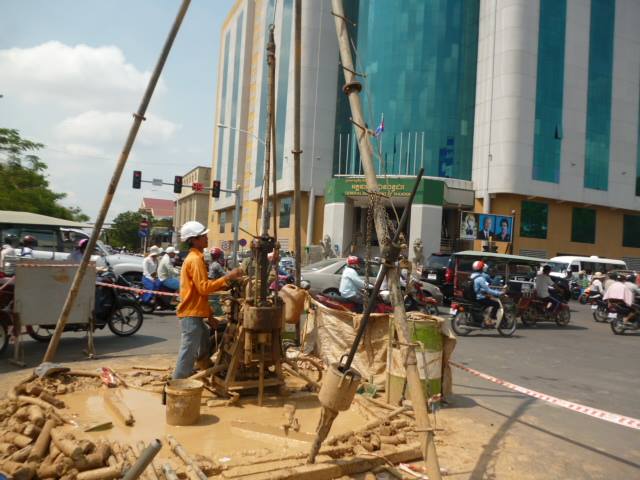Cone Penetration Test
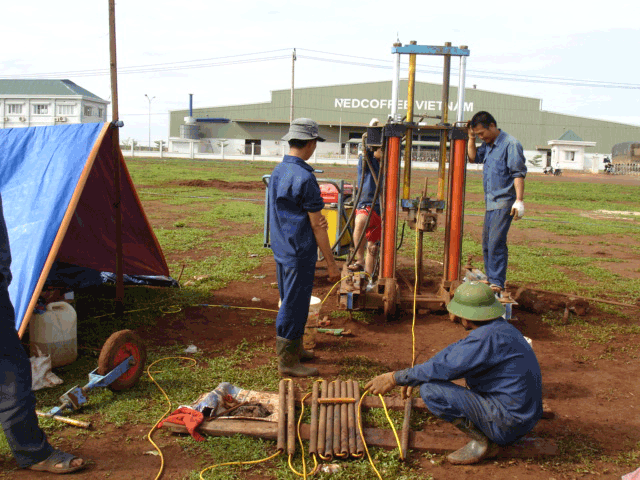 ASTM D3441-05
ASTM D3441-05
Standard Test Method for Mechanical Cone Penetration Tests of Soil.
1. Scope:
1.1 This test method covers the determination of end bearing and side friction, the components of penetration resistance that are developed during the steady slow penetration of a pointed rod into soil. This test method is sometimes referred to as the Dutch Cone Test or Cone Penetration Test and is often abbreviated as CPT.
1.2 This test method includes the use of mechanical cone and friction-cone penetrometers. It does not include the use of electric and electronic cones or data interpretation.
1.2.1 The use of electric and electronic cones is covered in Test Method D5778.
1.3 Mechanical penetrometers of the type described in this test method operate incrementally, using a telescoping penetrometer tip, resulting in no movement of the push rods during the measurement of the resistance components. Design constraints for mechanical penetrometers preclude a complete separation of the end-bearing and side-friction components.
1.4 UnitsThe values stated in inch-pound units are to be regarded as standard, except as noted below. The values given in parentheses are mathematical conversions to SI units, which are provided for information only and are not considered standard.
This standard does not purport to address all of the safety concerns, if any, associated with its use. It is the responsibility of the user of this standard to establish appropriate safety and health practices and determine the applicability of regulatory limitations prior to use.
2. Significance and Use:
This test method supplies data on selected engineering properties of soil intended to help with design and construction of earthworks and the foundations for structures.
This test method tests the soil in place and does not obtain soil samples. The interpretation of the results from this test method requires knowledge of the types of soil penetrated. Engineers usually obtain this soil information from parallel borings and soil sampling methods, but prior information or experience may preclude the need for borings.
Engineers often correlate the results of tests by this test method with laboratory or other types of field tests or directly with performance. The applicability and validity of such correlations will vary with the type of soil involved. In addition, engineers usually rely on local experience to judge the applicability and validity of such correlations.










